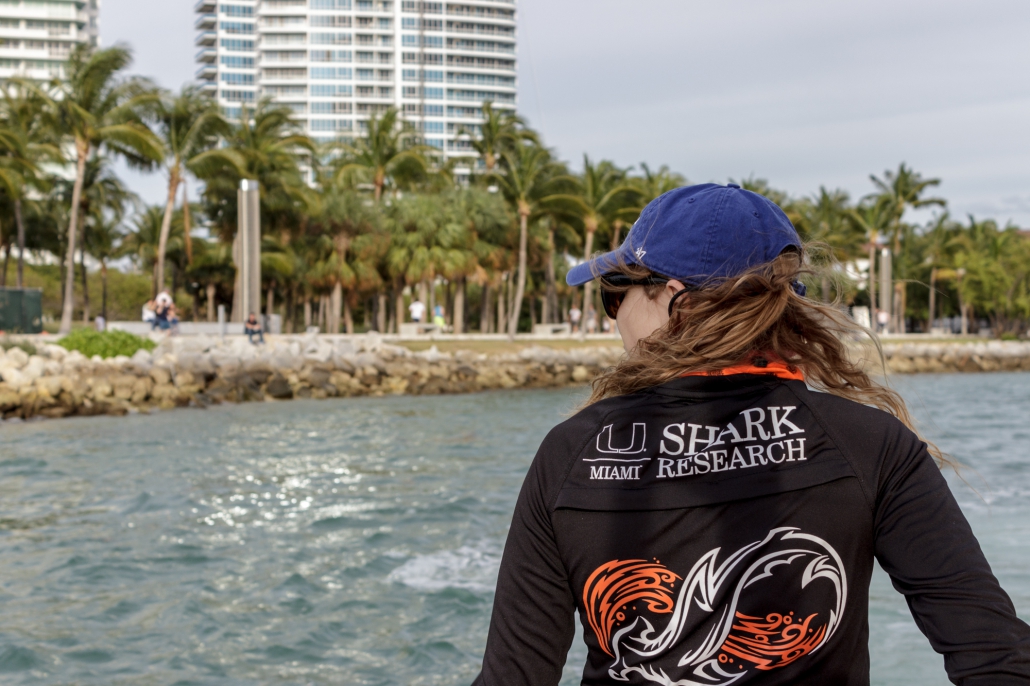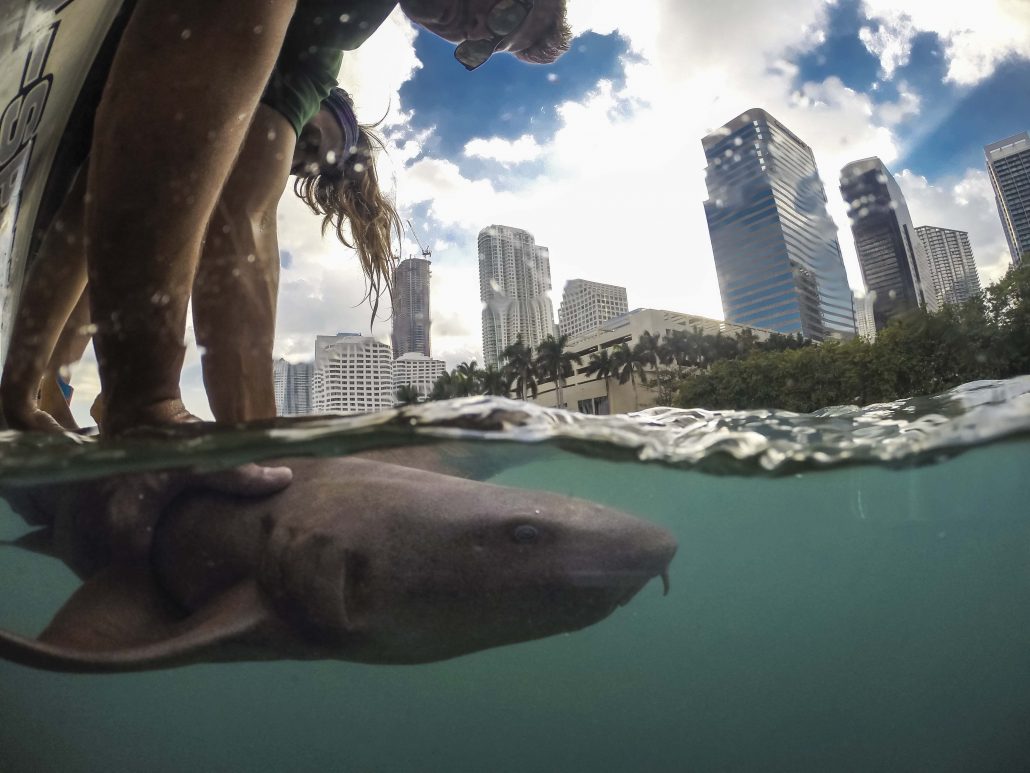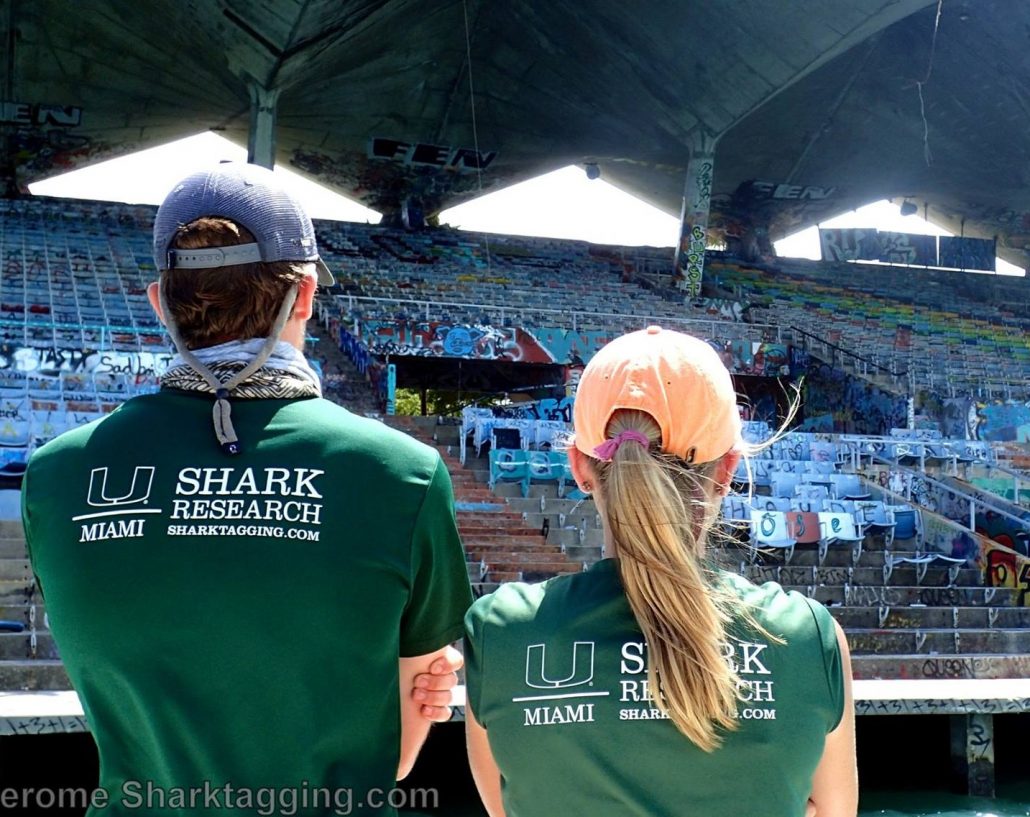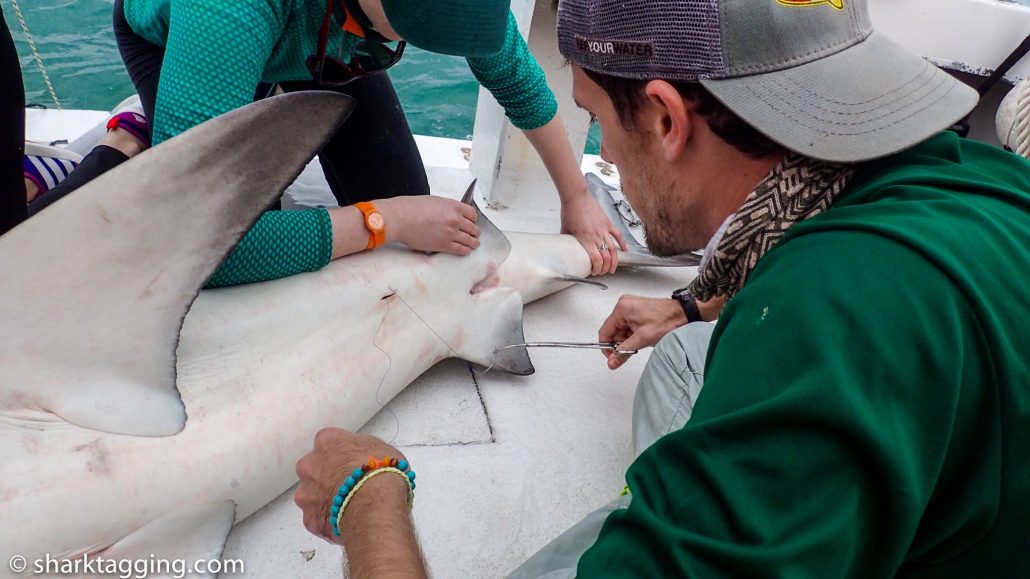Overview
Coastal marine habitats are ecologically and socio-economically important, and around 40% of the population of the United States lives on a coastline. As a result, human-induced changes are altering coastal habitats. Many species, including sharks, that were previously associated with undisturbed habitats are now living in increasingly human-dominated environments. However, a variety of marine animals are thriving in close proximity to humans, suggesting that they have adapted to new stressors, food sources, and predators.
As human-induced processes and patterns persist, it is important to understand how animals biology, physiology, behavior, and life-history has changed to allow them to survive. Urban coastal areas can serve as laboratories for studying the ecological and evolutionary selection processes that affect threatened species. However, the ramifications of urbanization on the basic life history, health, and connectivity of coastal shark populations remain unknown.
Coastal Florida presents a variety of reef, mangrove, and estuary habitats that provide essential living and breeding grounds for a variety of fish species, and these waters contain high densities of ecologically important marine predators such as sharks. However, Florida has been identified as a global hotspot for “coastal syndromes,” areas marked by a series of stressors such as habitat fragmentation, eutrophication (nutrient pollution), exploitation of nature, and polluted run-off. Northern Biscayne Bay has been heavily impacted by the 2.5 million people living around Miami. The port of Miami is ranked as one of the largest ports by volume in the United States and the Biscayne Bay watershed encompasses the city of Miami, the 44nd largest city by population in the United States. The ratio of weekend recreational boating traffic within Miami-Dade County is the highest of any county in Florida. At present, Northern Biscayne Bay is a highly polluted, degraded and urbanized environment. Our research focuses on better understanding the importance of these human-impacted habitats.
Some of the major objectives of this work include:
Check out some publications!
Hammerschlag N, Gutowsky LFG, Rider MJ, Roemer R, Gallagher AJ (2022) Urban sharks: residency patterns of marine top predators in relation to a coastal metropolis. Marine Ecology Progress Series 691:1-17. https://doi.org/10.3354/meps14086
Rangel BS, Hammerschlag N, Martinelli LA, Moreira RG. (2022) Effects of urbanization on the nutritional ecology of a highly active coastal shark: Preliminary insights from trophic markers and body condition. Science of The Total Environment. https://doi.org/10.1016/j.scitotenv.2022.154082
Black C, Merly L, Hammerschlag N. (2021) Bacterial communities in multiple tissues across the body surface of three coastal shark species. Zoological Studies 60:69. doi:10.6620/ZS.2021.60-69.
Bates AE, Primack RB, Duarte CM, and PAN-Environment Working Group (including Hammerschlag N, Rider MJ, Albano PS) (2021). Global COVID-19 lockdown highlights humans as both threats and custodians of the environment. Biological Conservation, (263). 109175. https://doi.org/10.1016/j.biocon.2021.109175.
Rider MJ, Kirsebom OS, Gallagher AJ, Staaterman E, Ault JS, Sasso CR, Jackson T, Browder JA, Hammerschlag N. (2021) Space use patterns of sharks in relation to boat activity in an urbanized coastal waterway. Marine Environmental Research. 172, 105489 https://doi.org/10.1016/j.marenvres.2021.105489.
de Sousa Rangel B, Moreira RG, Niella YV, Sulikowski JA, Hammerschlag N. (2021) Metabolic and nutritional condition of juvenile tiger sharks exposed to regional differences in coastal urbanization. Science of The Total Environment. 18:146548. https://doi.org/10.1016/j.scitotenv.2021.146548
de Sousa Rangel B, Hammerschlag N, Moreira RG (2021). Urban living influences the nutritional quality of a juvenile shark species. Science of The Total Environment. 146025. https://doi.org/10.1016/j.scitotenv.2021.146025
McDonnell LH, Jackson TL, Burgess GH, Phenix L, Gallagher AJ, Albertson H, Hammerschlag N, Browder JA. (2020) Saws and the city: smalltooth sawfish Pristis pectinata encounters, recovery potential, and research priorities in urbanized coastal waters off Miami, Florida, USA. Endangered Species Research. 17;43:543-53.
Cartolano MC, Berenshtein I, Heuer RM, Pasparakis C, Rider M, Hammerschlag N, Paris CB, Grosell M, McDonald MD. (2020). Impacts of a local music festival on fish stress hormone levels and the adjacent underwater soundscape. Environmental Pollution; 12:114925.
Gallagher AJ, Skubel RA, Pethybridge HR, Hammerschlag N. (2017). Energy metabolism in mobile, wild-sampled sharks inferred by plasma lipids. Conserv Physiol; 5 (1): cox002. doi: 10.1093/conphys/cox002
SRC – In Focus
Adopt a Shark
They may not be cute and cuddly, but sharks add beauty and diversity to our planet’s oceans. Many populations of sharks are declining and would benefit from scientific and conservation attention. However, researching these apex predators is neither easy nor cheap. To ensure SRC’s tracking studies of sharks can continue, please consider adopting a shark!
For this project, an acoustic tag is surgically implanted into the shark’s abdomen, and it collects data about the shark’s localized movement patterns when it is within range of a receiver. Receivers in our array are located across Biscayne Bay and even up the Miami river! While acoustic tags do not communicate with satellites or provide near real-time tracking like the tags used in our other shark movement project, a short report on your shark’s whereabouts can be provided to you on an annual basis, when we retrieve the receivers and download the data.
Individuals, corporate groups, classes and entire schools are welcome to collectively adopt sharks. We’re grateful for your support for our research!
Figure (above): SRC Graduate student Robbie Roemer performs surgery on a juvenile bull shark to insert an acoustic tag. Each acoustic tag is the size of an AA battery, and “pings” to communicate with receivers when within a range of 600m. The presence of acoustically tagged sharks within our receiver array is used to determine habitat use and movements patterns.





